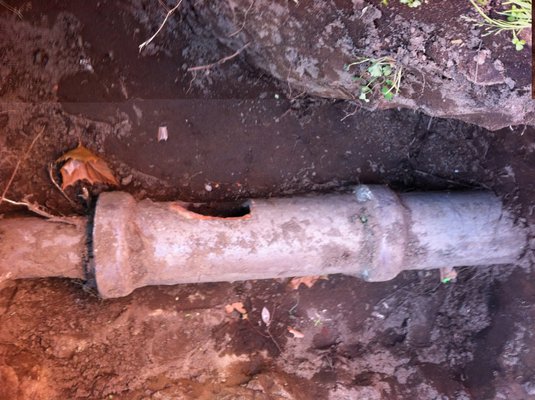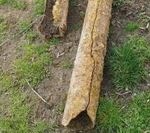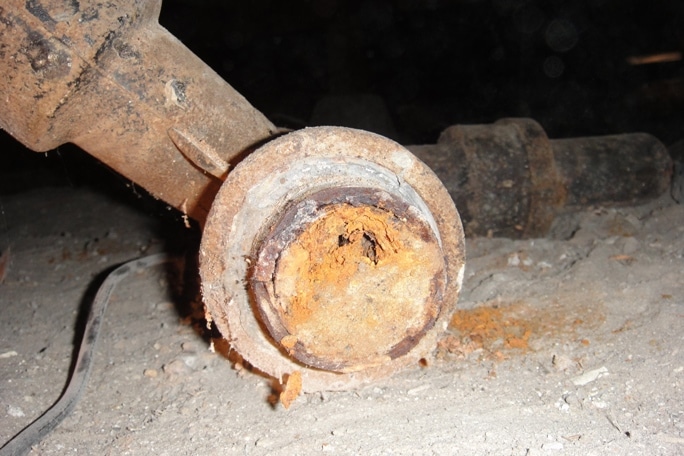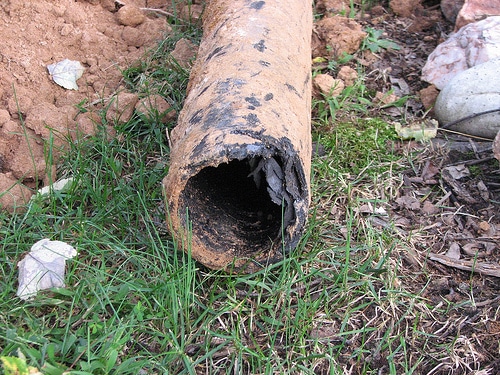Types of Drain Lines
Clay pipes
Common to houses built in the 1930s or before, these drains pictured below were made up of numerous sections of terra cotta pipe. Short pipes were laid end-to-end, but many easily migrated apart. The porous nature of these pipes tends to attract roots, which grow alongside the clay, absorbing moisture that soaks through the pipe. Over time, the roots increase in diameter and often crush the pipes. Once cracked, the roots easily find their way inside causing blockages.

Cast Iron
Houses built between the 1930s and 1960s most likely have drainpipes made of cast iron. These heavy, thick pipes had many advantages over clay pipes. The sections of pipe are longer, reducing the number of joints. These pipes also do not absorb moisture, so roots are not as likely to be attracted to them. Like any iron, these pipes are subject to rust when exposed to constant moisture. Cast iron pipe has a life span of 50 years to 60 years. Once deteriorated, these pipes crack or simply rust-through allowing roots to invade. In some cases, the pipe simply collapses, or the rust expands inside the pipe reducing the diameter and restricting flow.


Orangeburg
This is a tar-impregnated wood-fiber pipe that was made in the 1950s and 1960s. The name is derived from the town in New York where it was made. Orangeburg pipes look like a roll of tar paper. They were promoted as being lightweight, inexpensive, and impervious to most items poured into the drain. Over time, this pipe deforms due to the pressure of the earth, deteriorates, and falls apart like a wet toilet paper tube. If found, this pipe must be replaced.

ABS Plastic
Houses built since the 1960s are considered to have “modern” drain lines usually made from black ABS plastic. This is a huge improvement over cast iron and clay pipes, and if undamaged should last 100 years. However, these pipes are subject to damage. The pipes are glued together, preventing root encroachment. But if large roots grow directly under a glue joint, the force can eventually break the joint. If any gaps result, roots can find their way in and create an obstruction. While periodic clearing may work, the best solution is to repair the pipe.


